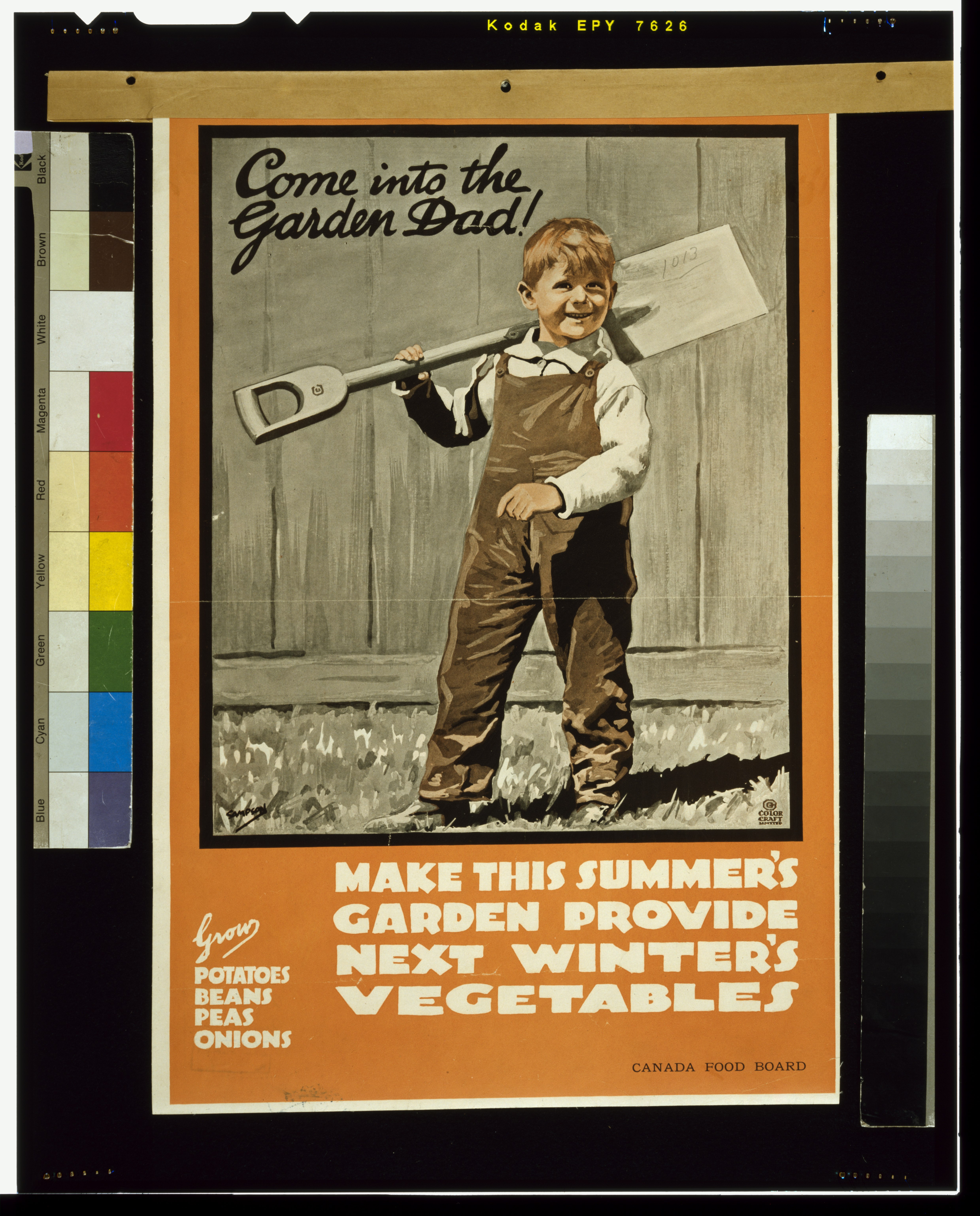Food for Thought
Victory Gardens: Food Security Then & Now
Did you know that during World War I and II, Canadians gardened to help feed themselves and support the war effort? These gardens were called Victory Gardens, and in 1943, there were 200,000 of them in Canada.
 |
| Sampson, Joseph Ernest, 1887-1946, artist |
World War I and II forced people to make changes and sacrifices at home as well as abroad. The economy was focused on the war effort, and every household felt the impact. One of these impacts was on food. Food needed to be shipped to soldiers and, in WWII, to the people of Britain. Slogans such as, “Serve apples daily and you serve your country too,” urged Canadians to eat “patriotic” foods that were not needed for shipping overseas.
Because a huge amount of food needed to be exported, some foods were not as available at home. Across the country, Canadians gardened to add to their home supply and support the war effort. In World War I, the Ministry of Agriculture led a campaign to encourage, "A Vegetable Garden for Every Home.” Residents of cities, towns and villages used backyards to grow vegetables in what became known as “Victory Gardens.”
During the Second World War, many Canadians saw the value of a home garden. But the Federal Ministry of Agriculture did not agree. One 1942 pamphlet produced by the department went so far as to actively discourage unskilled “city-folk” from planting food gardens because they would waste “garden tools, fertilizers and sprays, which are made from materials needed by Canada’s war industries.”
But Canadians were experiencing shortages of basic foods like potatoes, carrots and onions. Many citizens ignored the government and turned their yards into gardens. Organizations like the Victory Gardens Brigade in Victoria wrote letters to the federal government pointing out the value of home food production. Finally, in early 1943, the government realized there would be more food available to ship overseas if Canadians were eating from their gardens.
In an about-face, the government said that “every bit of land that is suitable should be put into a garden.” Canadians began to turn soil and plant seeds with enthusiasm. Everywhere backyards became gardens, many with chickens.
In Burnaby, lands returned to the city for failure to pay taxes were made available for gardens. A local newspaper ran headlines about the Victory Garden Competition and printed announcements for the Victory Garden Club. One announcement urged Burnaby gardeners to “Sew Vegetables Now.” By the end of 1943, it was estimated that there were 52,000 Victory Gardens in the Lower Mainland.
Today, many people want to eat food that is grown locally and without chemicals. Urban gardening is making a comeback. Some people are gardening for the first time, creating small gardens in their yards and on their balconies.
If you are interested in gardening, the Burnaby Public Library is a good source of information. You can search the book catalogue online, or drop in and a librarian will help you. You can also search the internet using ‘vegetable gardening for beginners”. And check back to the September 24/18 blog post on this site to find information about local seed catalogues that have great growing information. November is a great time to plan your spring garden.
If you are interested in a community garden, the City of Burnaby has excellent information online. You can find out what types of community gardens there are and get contact information to learn more.
The Victory Gardens of the past helped Canadians to feed themselves and be more self-sufficient. Our future food crises are likely to be caused by climate change rather than war. But it’s reassuring to know that Canadians are up to the challenge of growing food.

.JPG)





No comments :
Post a Comment